Category Archives: Data Science
Tail Spend Management & Spend Analytics
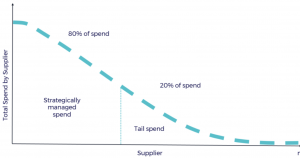
Do you know where your business is spending its money? And more importantly, do you know where your business SHOULD be spending its money? Many businesses don’t have a good handle on their tail spend – the money that’s spent on things that are not essential to the core operations of the company. Tail spend can be difficult to track and manage, but with the help of spend analytics tools and machine learning, it’s becoming easier than ever before. In this blog post, we’ll discuss what tail spend is, how to track it, and how to use analytics and machine learning to make better decisions about where to allocate your …
Two sample Z-test for Proportions: Formula & Examples
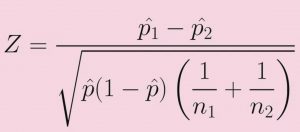
In statistics, a two-sample z-test for proportions is a method used to determine whether two samples are drawn from the same population. This test is used when the population proportion is unknown and there is not enough information to use the chi-squared distribution. The test uses the standard normal distribution to calculate the test statistic. As data scientists, it is important to know how to conduct this test in order to determine whether two proportions are equal. In this blog post, we will discuss the formula and examples of the two-proportion Z-test. What is two proportion Z-test? A two-proportion Z-test is a statistical hypothesis test used to determine whether two …
Decision Making Models: Concepts, Examples, Importance
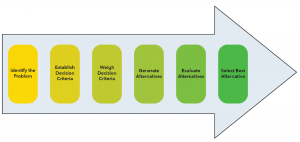
Making decisions is a critical part of business operations. However, making the right decision is not always easy. There are a number of different decision models that organizations can use to make better decisions. In this blog post, we will discuss some of the most popular decision models, what is their importance, and explain how they can be used to create desired business outcomes with the help of examples. In addition, we will also learn how could data and insights be used to drive decisions while implementing different kind of decision models. A decision scientist should be aware of these concepts fairly well. Decision models & different types Decision making …
Healthcare & Machine Learning Use Cases / Projects

AI & Machine learning is being used more and more in the healthcare industry. This is because it has the potential to improve patient outcomes, make healthcare more cost-effective, and help with other important tasks. In this blog post, we will discuss some of the healthcare & AI / machine learning use cases that are currently being implemented. We will also talk about the benefits of using machine learning in healthcare settings. Stay tuned for an exciting look at the future of healthcare! What are top healthcare challenges & related AI / machine learning use cases? Before getting into understand how machine learning / AI can be of help in …
Marketing Analytics Machine Learning Use Cases

If you’re like most business owners, you’re always looking for ways to improve your marketing efforts. You may have heard about marketing analytics and machine learning, but you’re not sure how they can help you. Marketing analytics is an essential tool for modern marketers. In this blog post, we will discuss some of the ways marketing analytics and AI / machine learning / Data science can be used to improve your marketing efforts. We’ll also give some real-world examples of how these technologies are being used by businesses today. So, if you’re ready to learn more about marketing analytics and machine learning, keep reading! What is marketing and what are …
Machine Learning Use Cases for Climate Change

Climate change is a serious issue facing the world. The climate changes which are already affecting our planet can be seen in rising sea levels, melting ice caps and glaciers, more severe storms and hurricanes, more droughts, and wildfires increased precipitation in some areas of the world while other regions experience less rainfall. It’s important that we do what we can to reduce climate change risks by reducing greenhouse gas emissions into the atmosphere as well as adapting to climate impacts. Artificial intelligence (AI), machine learning (ML)/ deep learning (DL), data science, advanced analytics have been widely used for decades across different industries such as finance, healthcare, etc., but their …
What is Human Data Science?
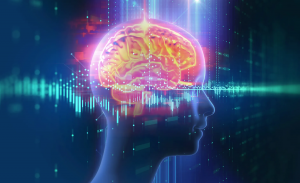
There’s a lot of buzz around the term “human data science.” What is it, and why should you care? Human data science is a relatively new field that combines the study of humans with the techniques of data science. By understanding human behavior and using big data techniques, unique and actionable insights can be obtained that weren’t possible before. In this blog post, we’ll discuss what human data science is and give some examples of how it’s being used today. What is human data science? Human data science is the study of humans using data science techniques. It’s a relatively new field that is growing rapidly as we learn more …
Cash Forecasting Models & Treasury Management

As a business owner, you are constantly working to ensure that your company has the cash it needs to operate. Cash forecasting is one of the most important aspects of treasury management, and it’s something that you should be paying attention to. Cash forecasting is a great example of where machine learning can have a real impact. By using historical data, we can build models that predict future cash flow for a company. This enables treasury managers to make better decisions about how to allocate resources and manage risks. As data scientists or machine learning engineers, it is important to be able to understand and explain the business value of …
85+ Free Online Books, Courses – Machine Learning & Data Science

This post represents a comprehensive list of 85+ free books/ebooks and courses on machine learning, deep learning, data science, optimization, etc which are available online for self-paced learning. This would be very helpful for data scientists starting to learn or gain expertise in the field of machine learning / deep learning. Please feel free to comment/suggest if I missed mentioning one or more important books that you like and would like to share. Also, sorry for the typos. Following are the key areas under which books are categorized: Data science Pattern Recognition & Machine Learning Probability & Statistics Neural Networks & Deep Learning Optimization Data mining Mathematics Here is my post …
Tensor Explained with Python Numpy Examples
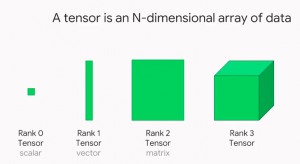
Tensors are a hot topic in the world of data science and machine learning. But what are tensors, and why are they so important? In this post, we will explain the concepts of Tensor using Python Numpy examples with the help of simple explanation. We will also discuss some of the ways that tensors can be used in data science and machine learning. When starting to learn deep learning, you must get a good understanding of the data structure namely tensor as it is used widely as the basic data structure in frameworks such as tensorflow, PyTorch, Keras etc. Stay tuned for more information on tensors! What are tensors, and why are …
Supplier Relationship Management & Machine Learning / AI

Supplier relationship management (SRM) is the process of managing supplier relationships to develop and maintain a strategic procurement partnership. SRM includes focus areas such as supplier selection, procurement strategy development, procurement negotiation, and performance measurement and improvement. SRM has been around for over 20 years but we are now seeing new technologies such as machine learning come into play. What exactly does advanced analytics such as artificial intelligence (AI) / machine learning (ML) have to do with SRM? And how will AI/ML technologies transform procurement? What are some real-world machine learning use cases related to supplier relationships management? What are a few SRM KPIs/metrics which can be tracked by leveraging …
Feedforward Neural Network Python Example
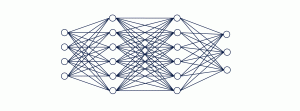
A feedforward neural network, also known as a multi-layer perceptron, is composed of layers of neurons that propagate information forward. In this post, you will learn about the concepts of feedforward neural network along with Python code example. We will start by discussing what a feedforward neural network is and why they are used. We will then walk through how to code a feedforward neural network in Python. In order to get good understanding on deep learning concepts, it is of utmost importance to learn the concepts behind feed forward neural network in a clear manner. Feed forward neural network learns the weights based on backpropagation algorithm which will be discussed …
Artificial Intelligence (AI) for Telemedicine: Use cases, Challenges
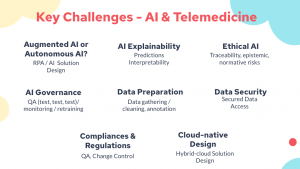
In this post, you will learn about different artificial intelligence (AI) use cases of Telemedicine / Telehealth including some of key implementation challenges pertaining to AI / machine learning. In case you are working in the field of data science / machine learning, you may want to go through some of the challenges, primarily AI related, which is thrown in Telemedicine domain due to upsurge in need of reliable Telemedicine services. What is Telemedicine? Telemedicine is the remote delivery of healthcare services, using digital communication technologies. It has the potential to improve access to healthcare, especially in remote or underserved communities. It can be used for a variety of purposes, including …
Scatter plot Matplotlib Python Example
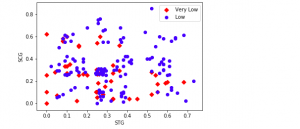
If you’re a data scientist, data analyst or a Python programmer, data visualization is key part of your job. And what better way to visualize all that juicy data than with a scatter plot? Matplotlib is your trusty Python library for creating charts and graphs, and in this blog we’ll show you how to use it to create beautiful scatter plots using examples and with the help of Matplotlib library. So dig into your data set, get coding, and see what insights you can uncover! What is a Scatter Plot? A scatter plot is a type of data visualization that is used to show the relationship between two variables. Scatter …
Why AI & Machine Learning Projects Fail?
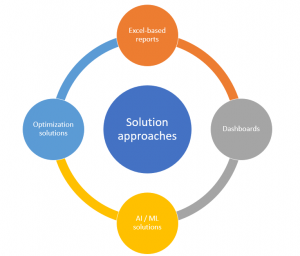
AI / Machine Learning and data science projects are becoming increasingly popular for businesses of all sizes. Every organization is trying to leverage AI to further automate their business processes and gain competitive edge by delivering innovative solutions to their customers. However, many of these AI & machine learning projects fail due to various different reasons. In this blog post, we will discuss some of the reasons why AI / Machine Learning / Data Science projects fail, and how you can avoid them. The following are some of the reasons why AI / Machine learning projects fail: Lack of understanding of business problems / opportunities Ineffective solution design approaches Lack …
Weight Decay in Machine Learning: Concepts
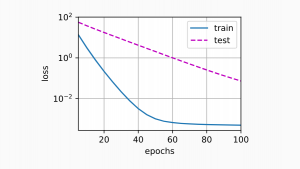
Weight decay is a popular technique in machine learning that helps to improve the accuracy of predictions. In this post, we’ll take a closer look at what weight decay is and how it works. We’ll also discuss some of the benefits of using weight decay and explore some possible applications. As data scientists, it is important to learn about concepts of weight decay as it helps in building machine learning models having higher generalization performance. Stay tuned! What is weight decay and how does it work? Weight decay is a regularization technique that is used to regularize the size of the weights of certain parameters in machine learning models. Weight …
I found it very helpful. However the differences are not too understandable for me